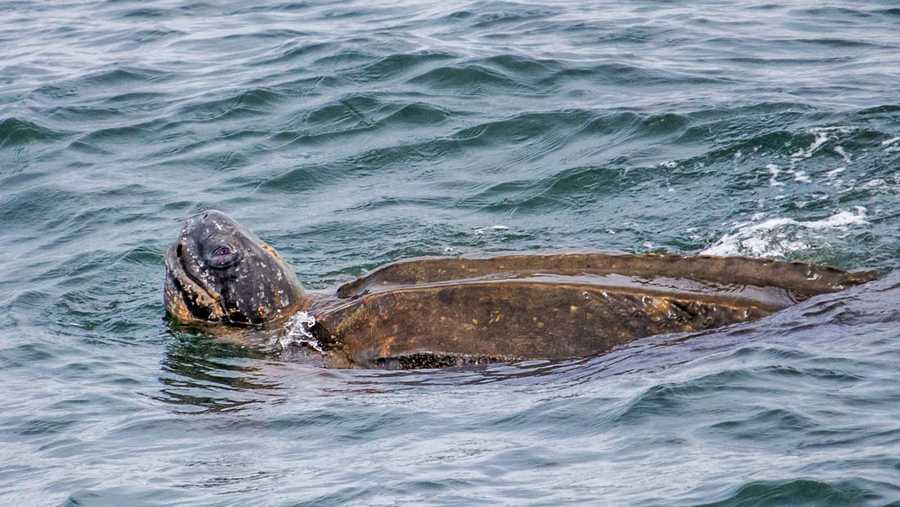Leatherback sea turtle, jellyfish blooms in Monterey Bay
A large leatherback sea turtle was found swimming in the Monterey Bay Monday by local marine wildlife photographer Randy Straka.
The turtle is likely feeding on jellyfish blooms spotted around the bay recently, including a gathering of sea nettles in Monterey's harbor, and hundreds moon jellies farther out in the bay.
Watch Straka's video of the leatherback sea turtle above, and jellyfish blooms below.
--You can also tap here to watch: the sea turtle / sea nettles / moon jellies
KSBW asked Jim Covel of the Monterey Bay Aquarium the following questioned about leatherback sea turtles Tuesday:
Q: Why are leatherback sea turtles so special?
A: There are a number of things that make this sea turtle species unique: It’s the largest of all turtles (land or sea) at over 6 feet long and 2,000 pounds. They can tolerate cooler waters, so they’re found farther north than other kinds of sea turtles (that are usually confined to tropical waters). They migrate long distances—the leatherbacks we see in Monterey Bay may swim as far as Malaysia and Indonesia to nest—over 7,000 miles! They can dive deeper than any other sea turtle, up to 4,200 feet beneath the surface, and hold their breath for up to 85 minutes.
Q: Is it rare for one to be in Monterey Bay?
A: We’re fortunate that these sea turtles visit us in Monterey Bay, often chasing their favorite food (jellies) into the bay in the late summer and early fall months. Sadly, it’s rare to see leatherback sea turtles anywhere these days. Their population has been reduced by over 80 percent, according to scientists. Swimming across vast distances in the ocean exposes these turtles to entanglement in fishing nets or hooking them on long lines, so their numbers have been declining dramatically in recent years.
Q: Is this turtle here to take advantage of all the jellyfish in Monterey Bay right now?
A: Most likely yes. The rich waters of Monterey Bay provide a lot of plankton for jellies to eat and, in turn, the leatherbacks seem to follow the jellies into the bay. You might be wondering how a turtle can grow to 2,000 pounds eating jellyfish? (There’s not a lot of nutrition in jellyfish.) Scientists have observed leatherbacks biting the middle out of the jellies where the plankton (and most of the nutrition) is concentrated. Feasting on jellies can get the turtles into trouble at times. Balloons, plastic bags and other plastics floating in the ocean can resemble jellyfish to a hungry turtle, and swallowing plastic can lead to some serious health issues. If that turtle in the video could talk, he or she might be thanking us here in California for reducing our use of plastic bags!


